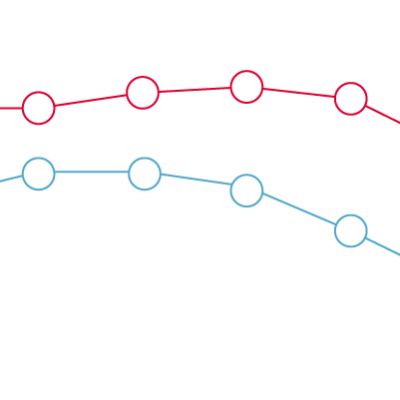Unemployment and underemployment trends
2 July 2024

Key points
- After rising during the pandemic, the unemployment rate was 3.8% in Q4 2023, lower than in the early-2000s and much lower than the peak of 8.4% in Q4 2011.
- The underemployment rate was 6.4% in Q4 2023 and – with the exception of the pandemic period – has been gradually falling since the financial crisis, but has not fallen below levels seen in the early-2000s.
- The gap between the two measures has grown, suggesting underemployment is a growing concern relative to unemployment.
Work has a multidimensional relationship with health. It affects health directly and indirectly, and can have both positive effects – such as the benefits of having a stable income and access to social networks – and negative effects – such as the impact of low-quality work on someone’s wellbeing.
This chart shows the proportion of economically active UK adults 16 years and older who have reported that they are either unemployed (currently without a job but actively seeking work) or underemployed (in work but looking for additional hours, an extra job or a job with more hours).
- The unemployment rate peaked at 8.4% in Q4 of 2011, before declining to 3.8% in Q4 of 2019.
- With the COVID-19 lockdown starting at the end of March 2020, unemployment rose sharply to 5.3% in Q4 2020, but has since declined again and it is now at 3.8% in Q4 2023.
- After peaking at 9.8% in Q3 2012, the underemployment rate decreased throughout the 2010s before rising again in 2020, reaching 8.4% in Q4 2020.
- The underemployment rate then decreased, settling at 6.4% in Q4 2023, a rate similar to that observed in the early-2000s.
- In the early-2000s, unemployment and underemployment rates were closer to each other and then started to diverge from the early 2010’s. The number of underemployed people is more than 1.6 times higher than the number of unemployed people. Pre-financial crisis, in Q4 2007, this was just 1.2 times higher.
- Unemployed people are people who are not working, who have been actively seeking work in the last four weeks and are available to start work within the next two weeks as specified by the International Labour Organisation (ILO).
- The unemployment rate is the unemployed population as a share of the economically active population.
- The underemployment measure captures the number of people: looking for an additional job; looking for a new job with longer hours to replace their current job; wanting to work longer hours in their current job and at their basic rate of pay. To be included in this measure, people also need to meet the following two criteria:
- They were available to start working longer hours within two weeks.
- They were working 40 hours or less per week (for people younger than 18 years) or 48 hours or less per week (for people aged 18 years and older), but wanted to work more hours.
- The underemployment rate is the underemployed population as a share of the economically active population.
- People who are economically active are people who are either in employment or who have been seeking work within the last four weeks and are able to start work within the next two weeks.
Source: Health Foundation analysis of Office for National Statistics, Labour market statistics, UK, 2002 Q1 to 2023 Q4









